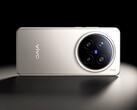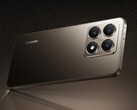
Xiaomi 15 Ultra review – Leica-powered powerhouse
Heavyweight contender in the smartphone arena.
The Xiaomi 15 Ultra aims to be the pinnacle of smartphone cameras, continuing its collaboration with Leica and equipping two new sensors to boost its main setup to 350 MP. Does it meet its ambitious claims? And what else does it offer? Our review has the answers.Daniel Schmidt, 👁 Daniel Schmidt, ✓ Louise Burke (translated by DeepL / Ninh Duy) Published 🇩🇪 🇫🇷 ...
Verdict: Xiaomi proves its power
The Xiaomi 15 Ultra delivers everything you'd expect from a flagship smartphone: top-tier performance, a sleek design, a bright display, long battery life and a capable camera setup. It’s rounded out with IP certification, modern connectivity options and fast charging technologies.
That said, there are a few compromises. The Xiaomi 15 Ultra lacks UWB support and its SoC throttles under sustained load. Xiaomi could also have been more generous with software updates – even Samsung's mid-range devices handle this better.
The camera stands out as one of the best setups in a smartphone and has no real technical weaknesses – though the ultra-wide-angle lens has seen a slight reduction. That said, Xiaomi and Leica have taken a distinct approach to colour tuning, which may not appeal to everyone.
Pros
Cons
Price and availability
In Germany which is where the testing was conducted, the Xiaomi 15 Ultra can be purchased directly from the manufacturer's store and is available at a lower price with free extras as part of early bird offers (until 31 March 2025). Alternatively, it's also available at retailers like Amazon.de and MediaMarkt.de for €1,499.90.
Possible alternatives compared
Image | Model / Review | Price | Weight | Drive | Display |
|---|---|---|---|---|---|
| Xiaomi 15 Ultra Qualcomm Snapdragon 8 Elite ⎘ Qualcomm Adreno 830 ⎘ 16 GB Memory, 512 GB | Amazon: 1. $11.99 Ibywind for Xiaomi 15 Ultra ... 2. $9.29 Zeking [2 Pack for Xiaomi 15... 3. $8.99 Kicvbnco 3 Pack For Xiaomi 1... List Price: 1499€ | 229 g | 512 GB UFS 4.1 Flash | 6.73" 3200x1440 521 PPI AMOLED | |
| Samsung Galaxy S25 Ultra Qualcomm Snapdragon 8 Elite for Galaxy ⎘ Qualcomm Adreno 830 ⎘ 12 GB Memory, 256 GB | Amazon: 1. $1,057.00 SAMSUNG Galaxy S25 Ultra SM-... 2. $1,157.00 SAMSUNG Galaxy S25 Ultra ... 3. $7.57 firtstnow 3 Pack Glass Scree... List Price: 1449€ | 218 g | 256 GB UFS 4.0 Flash | 6.90" 3120x1440 498 PPI Dynamic AMOLED 2X | |
| Apple iPhone 16 Pro Max Apple A18 Pro ⎘ Apple A18 Pro GPU ⎘ 8 GB Memory, 256 GB NVMe | Amazon: 1. $39.99 Apple iPhone 16 Pro Max Sili... 2. $44.65 Apple iPhone 16 Pro Max Sili... 3. $37.99 Apple iPhone 16 Pro Max Clea... List Price: 1449€ | 227 g | 256 GB NVMe | 6.90" 2868x1320 458 PPI Super Retina XDR OLED | |
| Honor Magic7 Pro Qualcomm Snapdragon 8 Elite ⎘ Qualcomm Adreno 830 ⎘ 12 GB Memory, 512 GB | Amazon: 1. $11.99 Ibywind for Honor Magic7 Pro... 2. $9.99 Anbzsign (2+2 Pack) for Hono... 3. $11.99 Charger for Honor Magic 7, 7... List Price: 1300€ | 223 g | 512 GB UFS 4.0 Flash | 6.80" 2800x1280 453 PPI OLED | |
| Oppo Find X8 Pro Mediatek Dimensity 9400 ⎘ ARM Immortalis-G925 MC12 ⎘ 16 GB Memory, 512 GB | Amazon: 1. $11.79 TNKISRY Cover for Oppo Find ... 2. $10.62 [1-Pack] for Oppo Find X8 Pr... 3. $13.28 YOUULAR [2 Pack Privacy Scre... List Price: 1199€ | 215 g | 512 GB UFS 4.0 Flash | 6.78" 2780x1264 450 PPI AMOLED |
Table of Contents
- Verdict: Xiaomi proves its power
- Specifications: Xiaomi 15 Ultra
- Case: The Xiaomi 15 Ultra is IP68 certified
- Features and connectivity: Xiaomi embraces Bluetooth 6.0
- Software: Packed with AI features and backed by six years of updates
- Connectivity and GNSS: Wi-Fi 7 and precise positioning
- Phone features and call quality
- Cameras: Xiaomi ditches the variable aperture
- Accessories and warranty: Optional photography kit
- Input devices and controls: Xiaomi 15 Ultra with higher touch sampling rate
- Display: Accurate LTPO-AMOLED with over 3,600 cd/m²
- Performance: Snapdragon 8 Elite powers the Xiaomi 15 Ultra
- Gaming: Xiaomi smartphone with 120 FPS gaming
- Emissions: SoC throttles under sustained load
- Battery life: Excellent runtimes despite smaller battery capacity
- Notebookcheck overall rating
The Xiaomi 15 Ultra follows the 14 Ultra and is set to launch globally shortly after its release in China this year. However, it comes with a small drawback: the global version features a smaller battery compared to the 6,000 mAh unit found in the Chinese model.
Xiaomi has also equipped its flagship smartphone with a faster SoC, a brighter display and a larger battery than its predecessor. The Ultra is also the first smartphone to officially support Bluetooth 6.0 and UFS 4.1.
In Germany, the Xiaomi 15 Ultra is available in two storage variants: 512 GB and 1 TB, priced at €1,500 and €1,700 respectively.
Specifications: Xiaomi 15 Ultra
Case: The Xiaomi 15 Ultra is IP68 certified
The Xiaomi 15 Ultra is available in black, white and silver chrome (the latter being our test device). It is slightly thicker and heavier than its predecessor but remains well-balanced and doesn’t feel top-heavy despite the large camera module. Xiaomi claims a thickness of 9.35 mm but our measurements show it's slightly thicker at 9.7 mm – and with the camera bump, it increases to 15.6 mm.
The back is made of fiberglass and PU leather, ensuring high material durability. The frame is aluminum, while the front features Xiaomi's in-house Shield Glass 2.0, which is said to be up to 16 times more resistant to drops. Build quality is excellent – the smartphone feels premium, with tight and uniform seams. The only minor drawback is a slight creak when the device is twisted.
The Xiaomi smartphone is IP68 certified, making it both dustproof and waterproof. The SIM tray cover is made of aluminum, while the tray itself is crafted from plastic.
Features and connectivity: Xiaomi embraces Bluetooth 6.0
At first glance, the Xiaomi 15 Ultra closely resembles its predecessor, but this photography-focused smartphone introduces a few innovations not yet seen in the competition. Alongside UFS 4.1 storage, it notably features Bluetooth 6.0, which offers improved energy efficiency, enhanced security, and more efficient data transfer, reducing latency. The new standard also supports precise distance measurement (channel sounding), enabling more accurate tracking of Bluetooth device distances – potentially reducing the need for UWB. Speaking of which, Xiaomi has once again opted to forgo UWB support.
The USB 3.2 port delivers speeds of up to 10 Gbit/s and supports wired video output. In our copy tests, the interface reached a solid 490.40 MB/s – though the standard has the potential for even higher performance. The device also includes NFC and an IR blaster.
Software: Packed with AI features and backed by six years of updates
The Xiaomi 15 Ultra runs on Google Android 15 with HyperOS 2.0. The OS is promised to receive four years of updates, with security patches extended for an additional two years.
The smartphone also boasts a range of AI features under Xiaomi's HyperAI umbrella. These include Gemini, Circle to Search, dynamic wallpaper creation, an AI-powered translator and more. It also offers numerous AI-based photo editing tools.
On the downside, Xiaomi pre-installs several third-party apps, though all of them can be uninstalled.
Sustainability
The Xiaomi 15 Ultra comes in packaging that is almost entirely plastic-free. However, the company provides only vague information about the use of recycled materials and does not disclose CO2e emissions.
Xiaomi does not offer manuals or spare parts for user-performed repairs.
Connectivity and GNSS: Wi-Fi 7 and precise positioning
The Xiaomi 15 Ultra supports all modern mobile standards, including 5G Sub-6, though it lacks 5G mmWave. With support for numerous frequency bands, it should be able to establish data connections worldwide. Reception quality is solid in urban areas.
Thanks to IEEE 802.11be, the Xiaomi 15 Ultra delivers the full bandwidth of Wi-Fi 7 across all three frequency bands. In our tests using the Asus ROG Rapture GT-AXE11000 (link to Amazon) as a reference router, transfer speeds were fast and stable.
| Networking | |
| Xiaomi 15 Ultra | |
| iperf3 transmit AXE11000 | |
| iperf3 receive AXE11000 | |
| iperf3 transmit AXE11000 6GHz | |
| iperf3 receive AXE11000 6GHz | |
| Samsung Galaxy S25 Ultra | |
| iperf3 transmit AXE11000 | |
| iperf3 receive AXE11000 | |
| iperf3 transmit AXE11000 6GHz | |
| iperf3 receive AXE11000 6GHz | |
| Apple iPhone 16 Pro Max | |
| iperf3 transmit AXE11000 | |
| iperf3 receive AXE11000 | |
| iperf3 transmit AXE11000 6GHz | |
| iperf3 receive AXE11000 6GHz | |
| Honor Magic7 Pro | |
| iperf3 transmit AXE11000 | |
| iperf3 receive AXE11000 | |
| iperf3 transmit AXE11000 6GHz | |
| iperf3 receive AXE11000 6GHz | |
| Oppo Find X8 Pro | |
| iperf3 transmit AXE11000 6GHz | |
| iperf3 receive AXE11000 6GHz | |
| Average Wi-Fi 7 | |
| iperf3 transmit AXE11000 | |
| iperf3 receive AXE11000 | |
| iperf3 transmit AXE11000 6GHz | |
| iperf3 receive AXE11000 6GHz | |
| Average of class Smartphone | |
| iperf3 transmit AXE11000 | |
| iperf3 receive AXE11000 | |
| iperf3 transmit AXE11000 6GHz | |
| iperf3 receive AXE11000 6GHz | |
The Xiaomi 15 Ultra achieves a satellite fix quickly outdoors, and even indoors, it maintains high accuracy while establishing a connection swiftly.
During a walk, we compared the Xiaomi smartphone with the Garmin Venu 2 fitness smartwatch. While neither device is error-free, the 15 Ultra tracks the distance travelled with even greater precision.
Phone features and call quality
The Xiaomi 15 Ultra supports VoLTE, Wi-Fi calling, and dual SIM functionality. It can accommodate either two nano-SIMs, two eSIMs, or a combination of both.
When held to the ear, the smartphone delivers natural-sounding voice quality for both parties. Noise cancellation performs well in most scenarios, though very loud background noise can occasionally break through, making the 15 Ultra user sound muffled. The speakerphone mode is impressive, though the Xiaomi user's voice can sound slightly tinny at greater distances.
Cameras: Xiaomi ditches the variable aperture
The front camera of the Xiaomi 15 Ultra remains nominally unchanged. Despite lacking autofocus and pixel-binning, it captures appealing selfies and supports Ultra HD video recording at up to 60 fps.
The real star, however, is on the back: a quad-camera setup featuring Leica Summilux lenses, anchored by a 1-inch Sony sensor. Xiaomi has removed the variable aperture, opting instead for an 8P aspherical high-transmission lens enhanced by a dual anti-reflective coating. Users can choose between three standard focal lengths: 23 mm, 28 mm, and 35 mm. The results are impressive, with the Xiaomi 15 Ultra delivering good to excellent image quality in all lighting conditions for a smartphone.
One minor drawback is the live view preview, which doesn’t always match the final image results, particularly in low-light scenarios where the actual photos often turn out significantly brighter.
One notable change is the new ultra-wide-angle sensor, which is actually smaller than its predecessor in the 14 Ultra. While the image quality is decent, it shows slight softness towards the edges. This lens also doubles as a macro lens, capable of focusing at distances as close as 2.5 cm.
Zooming is handled by two dedicated lenses. The 3x zoom (including a telemacro mode at 10 cm) is carried over from the previous model, but the new addition is a large Samsung HP9 sensor, enabling a 4.3x zoom at 200 MP. This setup delivers solid results, even for digital zoom beyond 10x magnification. Beyond 20x digital zoom, an additional optical viewfinder kicks in, with the device supporting digital zoom of up to 120x.
One minor drawback is the stabilisation at long focal lengths. While the Xiaomi 15 Ultra features both optical (OIS) and electronic (EIS) stabilisation, the live view can sometimes jerk abruptly. Additionally, the stabilisation mechanisms produce noticeable rattling sounds when the smartphone is shaken.
The Xiaomi 15 Ultra records videos in a wide range of resolutions, from 720p up to 8K. However, 8K is limited to 30 fps and is available with all lenses, though you can’t switch lenses during recording. In Ultra HD, frame rates go up to 120 fps, and if you stick to 60 fps, you can also record in Dolby Vision. Unfortunately, PAL frame rates are not supported. The results are impressive and the stabilisation works well. For audio, there's noise reduction that performs reliably but slightly alters spoken voices. The intensity of this effect varies depending on the situation.
Image comparison
Choose a scene and navigate within the first image. One click changes the position on touchscreens. One click on the zoomed-in image opens the original in a new window. The first image shows the scaled photograph of the test device.
HauptkameraHauptkameraUltraweitwinkel5-facher ZoomLow-LightUnder controlled lighting conditions, the Xiaomi 15 Ultra captures our test chart in great detail, even towards the edges. The surface textures of the paper remain well-preserved.
With the ColorChecker, most colours are reproduced accurately and are not overly brightened. However, a few tones show a DeltaE value above 10, which is slightly higher than ideal.


Accessories and warranty: Optional photography kit
The Xiaomi 15 Ultra comes with a minimal set of accessories: a USB cable, a SIM tool, and a transparent plastic case.
Compatible power adapters are available in the Xiaomi web shop. The photography kit is also back, expanding the Ultra's capabilities with a case and a grip attachment. The case can optionally be fitted with a 67 mm filter and the grip includes a carrying strap, a built-in 2,000 mAh battery and configurable control buttons. New to the kit is a detachable thumb rest, allowing the smartphone to be comfortably held with one hand without touching the touchscreen. However, at €200 (RRP), the kit isn’t exactly budget-friendly.
Xiaomi offers only a 12-month warranty for its smartphone that is separate from the retailer's statutory warranty. The device can also be insured through Xiaomi Care, which provides two years of coverage for €159.
Input devices and controls: Xiaomi 15 Ultra with higher touch sampling rate
Xiaomi has slightly increased the capacitive touchscreen's sampling rate to 300 Hz, enabling faster and more precise inputs. The ultrasonic in-display fingerprint sensor is quick and reliable.
The linear vibration motor delivers crisp haptic feedback. If it feels too intense, the intensity can be reduced in the settings, as it's preset to maximum by default.
Additional features include touchless gesture controls, a one-handed mode, and gesture shortcuts. The latter allows you to use taps on the back of the device as an input method, with options for double or triple taps. However, the customisation options are limited and largely tied to Chinese apps.
Display: Accurate LTPO-AMOLED with over 3,600 cd/m²
On paper, not much has changed compared to its predecessor in terms of the display: the panel measures 6.73 inches and operates with an optional 1,440p resolution. Thanks to the integrated LTPO technology, the refresh rate is dynamically adjusted between 1 and 120 Hz, and all HDR standards are supported.
During the test of the 14 Ultra, the peak brightness claimed by Xiaomi could only be achieved when playing HDR content, but this is now different. With a full-screen white display, the brightness exceeds 1,000 cd/m², and with a smaller white area (APL18), we measured up to 3,438 cd/m², or 3,630 cd/m² during HDR playback. Both figures are significantly higher than Xiaomi's stated specifications (3,200 cd/m²). For manual brightness adjustment, users have access to up to 617 cd/m².
Using an oscilloscope, we measured a base flicker rate of 120 Hz. However, Xiaomi has additionally implemented high-frequency PWM dimming at 1,920 Hz. At minimum display brightness, we recorded a frequency of 1,923 Hz. Combined with the flat amplitude, this OLED display is relatively eye-friendly, and discomfort is unlikely.
| |||||||||||||||||||||||||
Brightness Distribution: 96 %
Center on Battery: 1041 cd/m²
Contrast: ∞:1 (Black: 0 cd/m²)
ΔE ColorChecker Calman: 1 | ∀{0.5-29.43 Ø4.79}
ΔE Greyscale Calman: 1.9 | ∀{0.09-98 Ø5}
99.7% sRGB (Calman 2D)
Gamma: 2.23
CCT: 6697 K
| Xiaomi 15 Ultra AMOLED, 3200x1440, 6.7" | Samsung Galaxy S25 Ultra Dynamic AMOLED 2X, 3120x1440, 6.9" | Apple iPhone 16 Pro Max Super Retina XDR OLED, 2868x1320, 6.9" | Honor Magic7 Pro OLED, 2800x1280, 6.8" | Oppo Find X8 Pro AMOLED, 2780x1264, 6.8" | Xiaomi 14 Ultra AMOLED, 3200x1440, 6.7" | |
|---|---|---|---|---|---|---|
| Screen | -41% | -25% | 27% | 17% | -14% | |
| Brightness middle (cd/m²) | 1041 | 1357 30% | 1055 1% | 1607 54% | 1167 12% | 997 -4% |
| Brightness (cd/m²) | 1059 | 1350 27% | 1061 0% | 1609 52% | 1160 10% | 1002 -5% |
| Brightness Distribution (%) | 96 | 94 -2% | 93 -3% | 95 -1% | 98 2% | 96 0% |
| Black Level * (cd/m²) | ||||||
| Colorchecker dE 2000 * | 1 | 3.1 -210% | 1.5 -50% | 0.9 10% | 0.87 13% | 1.6 -60% |
| Colorchecker dE 2000 max. * | 2.7 | 4.7 -74% | 4.7 -74% | 1.8 33% | 1.64 39% | 3.3 -22% |
| Greyscale dE 2000 * | 1.9 | 2.2 -16% | 2.3 -21% | 1.7 11% | 1.4 26% | 1.8 5% |
| Gamma | 2.23 99% | 2 110% | 2.21 100% | 2.24 98% | 2.311 95% | 2.19 100% |
| CCT | 6697 97% | 6391 102% | 6625 98% | 6346 102% | 6426 101% | 6493 100% |
* ... smaller is better
| Display / HDR Peak Brightness | |
| Honor Magic7 Pro | |
| Xiaomi 15 Ultra | |
| Samsung Galaxy S25 Ultra | |
| Apple iPhone 16 Pro Max | |
| Display / APL18 Peak Brightness | |
| Xiaomi 15 Ultra | |
| Samsung Galaxy S25 Ultra | |
| Apple iPhone 16 Pro Max | |
| Honor Magic7 Pro | |
Screen Flickering / PWM (Pulse-Width Modulation)
| Screen flickering / PWM detected | 120 Hz Amplitude: 14.56 % Secondary Frequency: 1923 Hz | ||
The display backlight flickers at 120 Hz (worst case, e.g., utilizing PWM) . The frequency of 120 Hz is very low, so the flickering may cause eyestrain and headaches after extended use. In comparison: 53 % of all tested devices do not use PWM to dim the display. If PWM was detected, an average of 8167 (minimum: 5 - maximum: 343500) Hz was measured. | |||
Measurement series with fixed zoom level and different brightness settings. (The amplitude curve at minimum brightness appears flat, but this is due to the scaling. The enlarged version of the amplitude at minimum brightness can be seen in the info box.)
We assess the panel's colour accuracy using Calman and a photo spectrometer. The Xiaomi 15 Ultra performs exceptionally well in this test, as long as it is properly configured (refer to the screenshot description for details). In its factory settings, the white balance leans slightly cooler.
Display Response Times
| ↔ Response Time Black to White | ||
|---|---|---|
| 1.31 ms ... rise ↗ and fall ↘ combined | ↗ 0.6905 ms rise | |
| ↘ 0.623 ms fall | ||
| The screen shows very fast response rates in our tests and should be very well suited for fast-paced gaming. In comparison, all tested devices range from 0.1 (minimum) to 240 (maximum) ms. » 6 % of all devices are better. This means that the measured response time is better than the average of all tested devices (20.3 ms). | ||
| ↔ Response Time 50% Grey to 80% Grey | ||
| 0.87 ms ... rise ↗ and fall ↘ combined | ↗ 0.4885 ms rise | |
| ↘ 0.3775 ms fall | ||
| The screen shows very fast response rates in our tests and should be very well suited for fast-paced gaming. In comparison, all tested devices range from 0.165 (minimum) to 636 (maximum) ms. » 2 % of all devices are better. This means that the measured response time is better than the average of all tested devices (31.7 ms). | ||
Performance: Snapdragon 8 Elite powers the Xiaomi 15 Ultra
The Xiaomi 15 Ultra relies on Qualcomm's flagship product: the Snapdragon 8 Elite, which can utilise up to 16 GB of RAM. This SoC is currently one of the fastest of its kind and is only surpassed in the Android realm by the higher-clocked variant of the Galaxy S25 Ultra.
In benchmarks, the Xiaomi smartphone delivers solid results but falls slightly short of the full potential the Snapdragon nominally offers. Specifically, in system benchmarks, Honor and Samsung perform better. However, this difference is not noticeable in everyday use, and the Xiaomi 15 Ultra impresses with its smooth and seamless performance.
| UL Procyon AI Inference for Android - Overall Score NNAPI | |
| Oppo Find X8 Pro | |
| Samsung Galaxy S25 Ultra | |
| Honor Magic7 Pro | |
| Average of class Smartphone (3769 - 81594, n=137, last 2 years) | |
| Xiaomi 15 Ultra | |
| Average Qualcomm Snapdragon 8 Elite (8865 - 22767, n=16) | |
| Xiaomi 14 Ultra | |
| Geekbench AI | |
| Single Precision TensorFlow NNAPI 1.1 | |
| Oppo Find X8 Pro | |
| Honor Magic7 Pro | |
| Samsung Galaxy S25 Ultra | |
| Average of class Smartphone (122 - 4122, n=41, last 2 years) | |
| Xiaomi 15 Ultra | |
| Average Qualcomm Snapdragon 8 Elite (267 - 754, n=5) | |
| Half Precision TensorFlow NNAPI 1.1 | |
| Oppo Find X8 Pro | |
| Average of class Smartphone (122 - 32120, n=41, last 2 years) | |
| Honor Magic7 Pro | |
| Samsung Galaxy S25 Ultra | |
| Xiaomi 15 Ultra | |
| Average Qualcomm Snapdragon 8 Elite (271 - 755, n=5) | |
| Quantized TensorFlow NNAPI 1.1 | |
| Oppo Find X8 Pro | |
| Average of class Smartphone (118 - 44381, n=41, last 2 years) | |
| Honor Magic7 Pro | |
| Samsung Galaxy S25 Ultra | |
| Xiaomi 15 Ultra | |
| Average Qualcomm Snapdragon 8 Elite (641 - 1765, n=5) | |
The graphics acceleration is handled by the integrated Adreno 830. The benchmarks show a similar pattern to earlier tests: the performance is strong, though slightly behind some competing devices.
GFXBench (DX / GLBenchmark) 2.7: T-Rex Onscreen | 1920x1080 T-Rex Offscreen
GFXBench 3.0: on screen Manhattan Onscreen OGL | 1920x1080 1080p Manhattan Offscreen
GFXBench 3.1: on screen Manhattan ES 3.1 Onscreen | 1920x1080 Manhattan ES 3.1 Offscreen
GFXBench: on screen Car Chase Onscreen | 1920x1080 Car Chase Offscreen | on screen Aztec Ruins High Tier Onscreen | 2560x1440 Aztec Ruins High Tier Offscreen | on screen Aztec Ruins Normal Tier Onscreen | 1920x1080 Aztec Ruins Normal Tier Offscreen | 3840x2160 4K Aztec Ruins High Tier Offscreen
| 3DMark / Wild Life Extreme Unlimited | |
| Samsung Galaxy S25 Ultra | |
| Honor Magic7 Pro | |
| Xiaomi 15 Ultra | |
| Oppo Find X8 Pro | |
| Apple iPhone 16 Pro Max | |
| Xiaomi 14 Ultra | |
| 3DMark / Wild Life Extreme | |
| Samsung Galaxy S25 Ultra | |
| Oppo Find X8 Pro | |
| Xiaomi 15 Ultra | |
| Honor Magic7 Pro | |
| Xiaomi 14 Ultra | |
| Apple iPhone 16 Pro Max | |
| 3DMark / Wild Life Unlimited Score | |
| Samsung Galaxy S25 Ultra | |
| Honor Magic7 Pro | |
| Xiaomi 15 Ultra | |
| Apple iPhone 16 Pro Max | |
| Xiaomi 14 Ultra | |
| 3DMark / Solar Bay Score | |
| Samsung Galaxy S25 Ultra | |
| Honor Magic7 Pro | |
| Xiaomi 15 Ultra | |
| Oppo Find X8 Pro | |
| Apple iPhone 16 Pro Max | |
| Xiaomi 14 Ultra | |
| 3DMark / Solar Bay Unlimited Score | |
| Samsung Galaxy S25 Ultra | |
| Honor Magic7 Pro | |
| Xiaomi 15 Ultra | |
| Oppo Find X8 Pro | |
| Xiaomi 14 Ultra | |
| Apple iPhone 16 Pro Max | |
| 3DMark / Steel Nomad Light Unlimited Score | |
| Samsung Galaxy S25 Ultra | |
| Xiaomi 15 Ultra | |
| Xiaomi 15 Ultra | |
| Honor Magic7 Pro | |
| Oppo Find X8 Pro | |
| Apple iPhone 16 Pro Max | |
| 3DMark / Steel Nomad Light Score | |
| Samsung Galaxy S25 Ultra | |
| Honor Magic7 Pro | |
| Xiaomi 15 Ultra | |
| Xiaomi 15 Ultra | |
| Apple iPhone 16 Pro Max | |
| Oppo Find X8 Pro | |
| GFXBench (DX / GLBenchmark) 2.7 / T-Rex Onscreen | |
| Xiaomi 14 Ultra | |
| Xiaomi 15 Ultra | |
| Samsung Galaxy S25 Ultra | |
| Honor Magic7 Pro | |
| Apple iPhone 16 Pro Max | |
| Oppo Find X8 Pro | |
| GFXBench (DX / GLBenchmark) 2.7 / T-Rex Offscreen | |
| Oppo Find X8 Pro | |
| Xiaomi 15 Ultra | |
| Samsung Galaxy S25 Ultra | |
| Honor Magic7 Pro | |
| Apple iPhone 16 Pro Max | |
| Xiaomi 14 Ultra | |
| GFXBench 3.0 / Manhattan Onscreen OGL | |
| Xiaomi 14 Ultra | |
| Xiaomi 15 Ultra | |
| Samsung Galaxy S25 Ultra | |
| Honor Magic7 Pro | |
| Oppo Find X8 Pro | |
| Apple iPhone 16 Pro Max | |
| GFXBench 3.0 / 1080p Manhattan Offscreen | |
| Samsung Galaxy S25 Ultra | |
| Oppo Find X8 Pro | |
| Xiaomi 15 Ultra | |
| Honor Magic7 Pro | |
| Xiaomi 14 Ultra | |
| Apple iPhone 16 Pro Max | |
| GFXBench 3.1 / Manhattan ES 3.1 Onscreen | |
| Xiaomi 15 Ultra | |
| Samsung Galaxy S25 Ultra | |
| Honor Magic7 Pro | |
| Xiaomi 14 Ultra | |
| Apple iPhone 16 Pro Max | |
| Oppo Find X8 Pro | |
| GFXBench 3.1 / Manhattan ES 3.1 Offscreen | |
| Oppo Find X8 Pro | |
| Honor Magic7 Pro | |
| Xiaomi 15 Ultra | |
| Samsung Galaxy S25 Ultra | |
| Xiaomi 14 Ultra | |
| Apple iPhone 16 Pro Max | |
| GFXBench / Car Chase Onscreen | |
| Honor Magic7 Pro | |
| Samsung Galaxy S25 Ultra | |
| Xiaomi 15 Ultra | |
| Xiaomi 14 Ultra | |
| Apple iPhone 16 Pro Max | |
| Oppo Find X8 Pro | |
| GFXBench / Car Chase Offscreen | |
| Xiaomi 15 Ultra | |
| Oppo Find X8 Pro | |
| Honor Magic7 Pro | |
| Samsung Galaxy S25 Ultra | |
| Xiaomi 14 Ultra | |
| Apple iPhone 16 Pro Max | |
| GFXBench / Aztec Ruins High Tier Onscreen | |
| Honor Magic7 Pro | |
| Samsung Galaxy S25 Ultra | |
| Xiaomi 15 Ultra | |
| Xiaomi 14 Ultra | |
| Apple iPhone 16 Pro Max | |
| Oppo Find X8 Pro | |
| GFXBench / Aztec Ruins High Tier Offscreen | |
| Samsung Galaxy S25 Ultra | |
| Xiaomi 15 Ultra | |
| Oppo Find X8 Pro | |
| Honor Magic7 Pro | |
| Xiaomi 14 Ultra | |
| Apple iPhone 16 Pro Max | |
| GFXBench / Aztec Ruins Normal Tier Onscreen | |
| Xiaomi 15 Ultra | |
| Samsung Galaxy S25 Ultra | |
| Honor Magic7 Pro | |
| Xiaomi 14 Ultra | |
| Apple iPhone 16 Pro Max | |
| Oppo Find X8 Pro | |
| GFXBench / Aztec Ruins Normal Tier Offscreen | |
| Xiaomi 15 Ultra | |
| Honor Magic7 Pro | |
| Oppo Find X8 Pro | |
| Samsung Galaxy S25 Ultra | |
| Xiaomi 14 Ultra | |
| Apple iPhone 16 Pro Max | |
| GFXBench / 4K Aztec Ruins High Tier Offscreen | |
| Samsung Galaxy S25 Ultra | |
| Xiaomi 15 Ultra | |
| Honor Magic7 Pro | |
| Oppo Find X8 Pro | |
| Xiaomi 14 Ultra | |
| Apple iPhone 16 Pro Max | |
The browser performance is solid, and the Xiaomi 15 Ultra positions itself in the mid-range of the comparison field.
| Jetstream 2 - 2.0 Total Score | |
| Apple iPhone 16 Pro Max (Safari Mobile 18.0.1) | |
| Samsung Galaxy S25 Ultra (Chrome 132) | |
| Honor Magic7 Pro (Chrome 131) | |
| Xiaomi 15 Ultra (Chrome 132) | |
| Average Qualcomm Snapdragon 8 Elite (75.1 - 329, n=17) | |
| Oppo Find X8 Pro (Chrome 131) | |
| Average of class Smartphone (23.8 - 387, n=154, last 2 years) | |
| Xiaomi 14 Ultra (Chrome 123) | |
| Speedometer 2.0 - Result 2.0 | |
| Apple iPhone 16 Pro Max (Safari Mobile 18.0.1) | |
| Samsung Galaxy S25 Ultra (Chrome 132) | |
| Honor Magic7 Pro (Chrome 131) | |
| Average Qualcomm Snapdragon 8 Elite (244 - 603, n=9) | |
| Xiaomi 15 Ultra (Chrome 132) | |
| Oppo Find X8 Pro (Chrome 131) | |
| Xiaomi 14 Ultra (Chrome 123) | |
| Average of class Smartphone (15.2 - 643, n=131, last 2 years) | |
| Speedometer 3 - Score 3.0 | |
| Apple iPhone 16 Pro Max (Safari Mobile 18.0.1) | |
| Samsung Galaxy S25 Ultra (Chrome 132) | |
| Honor Magic7 Pro (Chrome 131) | |
| Xiaomi 15 Ultra | |
| Average Qualcomm Snapdragon 8 Elite (15.3 - 36.8, n=15) | |
| Oppo Find X8 Pro (Chrome 131) | |
| Average of class Smartphone (1.03 - 42.8, n=121, last 2 years) | |
| Xiaomi 14 Ultra (Chrome 123) | |
| WebXPRT 4 - Overall | |
| Apple iPhone 16 Pro Max (Safari Mobile 18.0.1) | |
| Samsung Galaxy S25 Ultra (Chrome 132) | |
| Honor Magic7 Pro (Chrome 131) | |
| Average Qualcomm Snapdragon 8 Elite (102 - 255, n=16) | |
| Xiaomi 15 Ultra (Chrome 132) | |
| Xiaomi 14 Ultra (Chrome 123) | |
| Oppo Find X8 Pro (Chrome 131) | |
| Average of class Smartphone (27 - 306, n=147, last 2 years) | |
| Octane V2 - Total Score | |
| Apple iPhone 16 Pro Max (Safari Mobile 18.0.1) | |
| Samsung Galaxy S25 Ultra (Chrome 132) | |
| Honor Magic7 Pro (Chrome 131) | |
| Xiaomi 15 Ultra (Chrome 132) | |
| Average Qualcomm Snapdragon 8 Elite (25448 - 95506, n=23) | |
| Oppo Find X8 Pro (Chrome 131) | |
| Xiaomi 14 Ultra (Chrome 123) | |
| Average of class Smartphone (2228 - 121337, n=200, last 2 years) | |
| Mozilla Kraken 1.1 - Total | |
| Average of class Smartphone (257 - 28190, n=155, last 2 years) | |
| Xiaomi 14 Ultra (Chrome 123) | |
| Oppo Find X8 Pro (Chrome 131) | |
| Average Qualcomm Snapdragon 8 Elite (383 - 1170, n=18) | |
| Xiaomi 15 Ultra (Chrome 132) | |
| Honor Magic7 Pro (Chrome 131) | |
| Samsung Galaxy S25 Ultra (Chrome 132) | |
| Apple iPhone 16 Pro Max (Safari Mobile 18.0.1) | |
* ... smaller is better
The Xiaomi 15 Ultra is the first smartphone to feature the new UFS 4.1 storage. However, it isn’t faster than the UFS 4.0 used by competitors and even performs slightly worse in tests when transferring small data blocks – though these differences are minor and only noticeable under close scrutiny. The advantage of the new variant is its support for more modern protocol versions of M-PHY and UniPro.
| Xiaomi 15 Ultra | Samsung Galaxy S25 Ultra | Honor Magic7 Pro | Oppo Find X8 Pro | Xiaomi 14 Ultra | Average 512 GB UFS 4.1 Flash | Average of class Smartphone | |
|---|---|---|---|---|---|---|---|
| AndroBench 3-5 | -10% | -6% | -19% | 9% | 9% | -29% | |
| Sequential Read 256KB (MB/s) | 4109.79 | 3823.28 -7% | 3910.81 -5% | 3482.9 -15% | 4102.56 0% | 3938 ? -4% | 2207 ? -46% |
| Sequential Write 256KB (MB/s) | 3761.19 | 3361.24 -11% | 3683.81 -2% | 3498.5 -7% | 3095.36 -18% | 3454 ? -8% | 1822 ? -52% |
| Random Read 4KB (MB/s) | 312.69 | 287.85 -8% | 282.34 -10% | 375.7 20% | 362.88 16% | 378 ? 21% | 292 ? -7% |
| Random Write 4KB (MB/s) | 379.29 | 331.61 -13% | 357.04 -6% | 100.4 -74% | 527.15 39% | 477 ? 26% | 339 ? -11% |
Gaming: Xiaomi smartphone with 120 FPS gaming
The Xiaomi 15 Ultra enables high-frame-rate (HFR) gaming without compromising on detail and also supports hardware-based ray tracing. The large display and powerful speakers round off the overall package.
We tested the gaming performance using GameBench: while Wild Rift runs smoothly at all times without any issues, PUBG Mobile occasionally shows frame drops, though these are not significant as the FPS remains consistently high.
Emissions: SoC throttles under sustained load
Temperature
The surface temperatures of the Xiaomi 15 Ultra can reach up to 42.7 °C in certain areas at peak, which is neither disruptive in everyday use nor technically problematic.
In the 3DMark stress tests, noticeable throttling occurs. While this is more pronounced than with the 14 Ultra, it is often less severe compared to the competition.
(±) The maximum temperature on the upper side is 42.7 °C / 109 F, compared to the average of 35.2 °C / 95 F, ranging from 21.9 to 247 °C for the class Smartphone.
(±) The bottom heats up to a maximum of 41.9 °C / 107 F, compared to the average of 34 °C / 93 F
(+) In idle usage, the average temperature for the upper side is 25.5 °C / 78 F, compared to the device average of 32.9 °C / 91 F.
3DMark Steel Nomad stress test
| 3DMark | |
| Wild Life Stress Test Stability | |
| Apple iPhone 16 Pro Max | |
| Oppo Find X8 Pro | |
| Xiaomi 14 Ultra | |
| Xiaomi 15 Ultra | |
| Honor Magic7 Pro | |
| Samsung Galaxy S25 Ultra | |
| Wild Life Extreme Stress Test | |
| Xiaomi 14 Ultra | |
| Xiaomi 15 Ultra | |
| Apple iPhone 16 Pro Max | |
| Oppo Find X8 Pro | |
| Samsung Galaxy S25 Ultra | |
| Solar Bay Stress Test Stability | |
| Apple iPhone 16 Pro Max | |
| Xiaomi 14 Ultra | |
| Xiaomi 15 Ultra | |
| Oppo Find X8 Pro | |
| Samsung Galaxy S25 Ultra | |
| Honor Magic7 Pro | |
| Steel Nomad Light Stress Test Stability | |
| Apple iPhone 16 Pro Max | |
| Honor Magic7 Pro | |
| Xiaomi 15 Ultra | |
| Oppo Find X8 Pro | |
| Samsung Galaxy S25 Ultra | |
Speakers
The dual speakers of the Xiaomi 15 Ultra deliver good sound quality and can get very loud. However, at high volumes, the highs are slightly too pronounced, resulting in a tinny sound.
For wired audio, the USB port can be used for audio transmission. Wirelessly, Bluetooth 6.0 is available with broad codec support, though LC3 is notably absent – despite being listed as supported in the specifications. What's more, Auracast is also on board.
Xiaomi 15 Ultra audio analysis
(+) | speakers can play relatively loud (92.1 dB)
Bass 100 - 315 Hz
(-) | nearly no bass - on average 22.7% lower than median
(+) | bass is linear (4.8% delta to prev. frequency)
Mids 400 - 2000 Hz
(+) | balanced mids - only 4.9% away from median
(+) | mids are linear (4.6% delta to prev. frequency)
Highs 2 - 16 kHz
(+) | balanced highs - only 3.3% away from median
(+) | highs are linear (3.5% delta to prev. frequency)
Overall 100 - 16.000 Hz
(±) | linearity of overall sound is average (15.1% difference to median)
Compared to same class
» 2% of all tested devices in this class were better, 3% similar, 96% worse
» The best had a delta of 12%, average was 35%, worst was 134%
Compared to all devices tested
» 20% of all tested devices were better, 4% similar, 76% worse
» The best had a delta of 4%, average was 24%, worst was 134%
Samsung Galaxy S25 Ultra audio analysis
(+) | speakers can play relatively loud (93 dB)
Bass 100 - 315 Hz
(-) | nearly no bass - on average 21.5% lower than median
(+) | bass is linear (4.8% delta to prev. frequency)
Mids 400 - 2000 Hz
(+) | balanced mids - only 4.3% away from median
(+) | mids are linear (4.4% delta to prev. frequency)
Highs 2 - 16 kHz
(+) | balanced highs - only 3.3% away from median
(+) | highs are linear (1.4% delta to prev. frequency)
Overall 100 - 16.000 Hz
(+) | overall sound is linear (14.6% difference to median)
Compared to same class
» 1% of all tested devices in this class were better, 2% similar, 97% worse
» The best had a delta of 12%, average was 35%, worst was 134%
Compared to all devices tested
» 18% of all tested devices were better, 4% similar, 78% worse
» The best had a delta of 4%, average was 24%, worst was 134%
Battery life: Excellent runtimes despite smaller battery capacity
Power consumption
The power consumption of the Xiaomi 15 Ultra is low, with the SoC requiring relatively little energy even under load. It's quite possible that this is why the benchmarks are slightly slower, as Xiaomi seems to prioritise efficiency in this regard.
The smartphone can be charged wirelessly at up to 80 watts, or with a cable at up to 90 watts – provided you have the appropriate power adapter. With this, a full charge is achieved in 56 minutes (50%: 18 min, 80%: 33 min, 90%: 41 min).
| Off / Standby | |
| Idle | |
| Load |
|
Key:
min: | |
| Xiaomi 15 Ultra 5410 mAh | Samsung Galaxy S25 Ultra 5000 mAh | Apple iPhone 16 Pro Max 4685 mAh | Honor Magic7 Pro 5270 mAh | Oppo Find X8 Pro 5910 mAh | Xiaomi 14 Ultra 5000 mAh | Average Qualcomm Snapdragon 8 Elite | Average of class Smartphone | |
|---|---|---|---|---|---|---|---|---|
| Power Consumption | -27% | -20% | -56% | -1% | -12% | -70% | -42% | |
| Idle Minimum * (Watt) | 0.49 | 0.55 -12% | 0.42 14% | 0.94 -92% | 0.6 -22% | 0.8 -63% | 1.083 ? -121% | 0.856 ? -75% |
| Idle Average * (Watt) | 0.87 | 0.77 11% | 1.55 -78% | 1.5 -72% | 0.8 8% | 0.89 -2% | 1.657 ? -90% | 1.437 ? -65% |
| Idle Maximum * (Watt) | 0.94 | 0.91 3% | 1.58 -68% | 1.57 -67% | 0.9 4% | 0.91 3% | 1.86 ? -98% | 1.612 ? -71% |
| Load Average * (Watt) | 8.82 | 13.81 -57% | 3.41 61% | 11.03 -25% | 6.8 23% | 8.99 -2% | 9.01 ? -2% | 7.1 ? 20% |
| Load Maximum * (Watt) | 9.26 | 16.69 -80% | 11.82 -28% | 11.68 -26% | 10.9 -18% | 9.01 3% | 12.8 ? -38% | 11.2 ? -21% |
* ... smaller is better
Power consumption: Geekbench (150 cd/m²)
Power consumption: GFXbench (150 cd/m²)
Runtimes
The 5,410 mAh battery in the Xiaomi 15 Ultra, while smaller than the Chinese variant (6,000 mAh), delivers very good battery life in testing. These results are also significantly better compared to its predecessor. However, in most cases, competitors still last longer.
| Xiaomi 15 Ultra 5410 mAh | Samsung Galaxy S25 Ultra 5000 mAh | Apple iPhone 16 Pro Max 4685 mAh | Honor Magic7 Pro 5270 mAh | Oppo Find X8 Pro 5910 mAh | Xiaomi 14 Ultra 5000 mAh | |
|---|---|---|---|---|---|---|
| Battery runtime | 8% | 37% | 6% | 29% | -35% | |
| Reader / Idle (h) | 44.8 | 45.8 2% | 70.4 57% | 42.1 -6% | 61.1 36% | 33.1 -26% |
| H.264 (h) | 27.5 | 32.3 17% | 33.2 21% | 30.1 9% | 32.9 20% | 17.6 -36% |
| WiFi v1.3 (h) | 21.2 | 22.2 5% | 20.8 -2% | 24.7 17% | 23.5 11% | 12.5 -41% |
| Load (h) | 3.5 | 3.7 6% | 6 71% | 3.6 3% | 5.2 49% | 2.2 -37% |
Notebookcheck overall rating
The Xiaomi 15 Ultra offers a comprehensive package that lives up to the standards of a high-end smartphone. The only notable omissions are UWB (Ultra-Wideband) and the update support, which isn’t top-tier. In return, it features one of the best camera setups available.
Xiaomi 15 Ultra
- 03/07/2025 v8
Daniel Schmidt
Transparency
The selection of devices to be reviewed is made by our editorial team. The test sample was given to the author by the manufacturer free of charge for the purposes of review. There was no third-party influence on this review, nor did the manufacturer receive a copy of this review before publication. There was no obligation to publish this review. As an independent media company, Notebookcheck is not subjected to the authority of manufacturers, retailers or publishers.
This is how Notebookcheck is testing
Every year, Notebookcheck independently reviews hundreds of laptops and smartphones using standardized procedures to ensure that all results are comparable. We have continuously developed our test methods for around 20 years and set industry standards in the process. In our test labs, high-quality measuring equipment is utilized by experienced technicians and editors. These tests involve a multi-stage validation process. Our complex rating system is based on hundreds of well-founded measurements and benchmarks, which maintains objectivity. Further information on our test methods can be found here.
























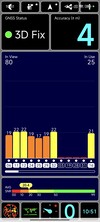












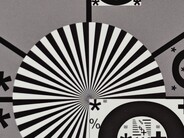


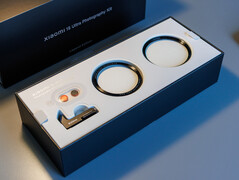
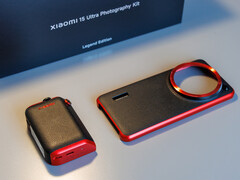
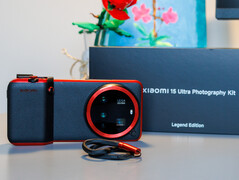

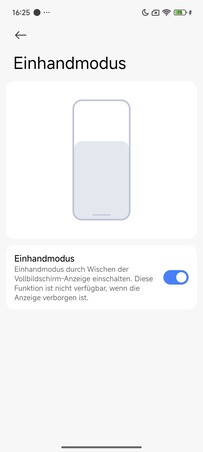
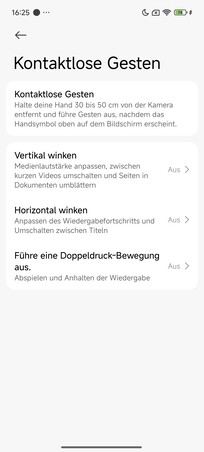
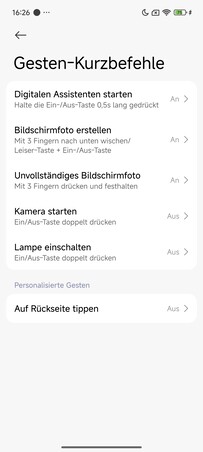


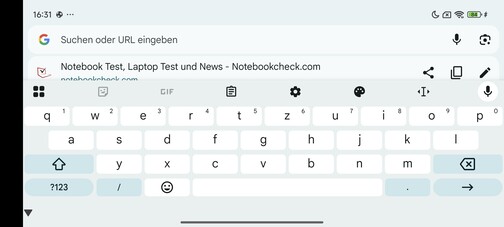
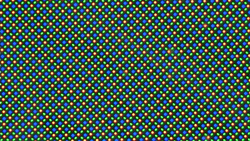
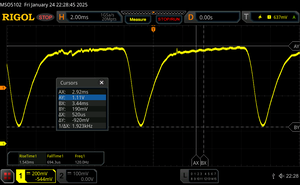





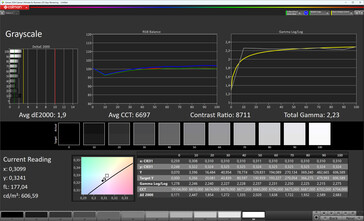
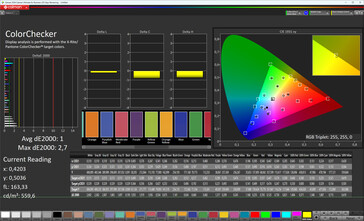
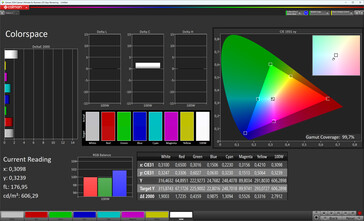
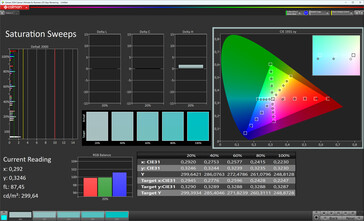
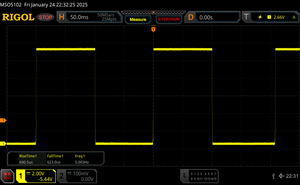
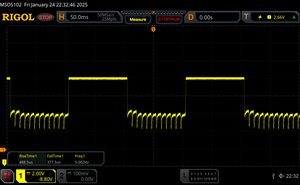
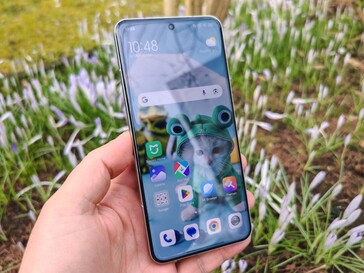
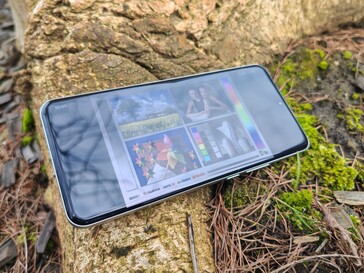




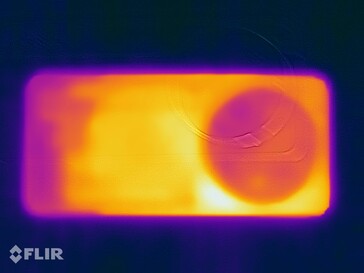
 Total Sustainability Score:
Total Sustainability Score: 


